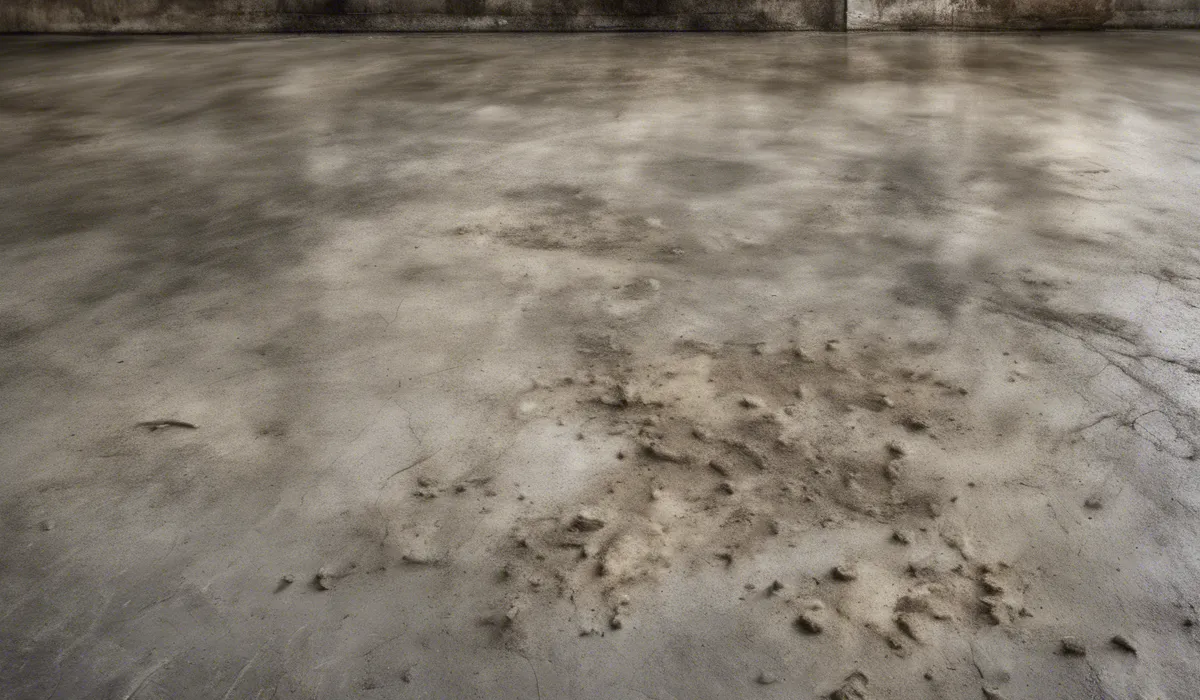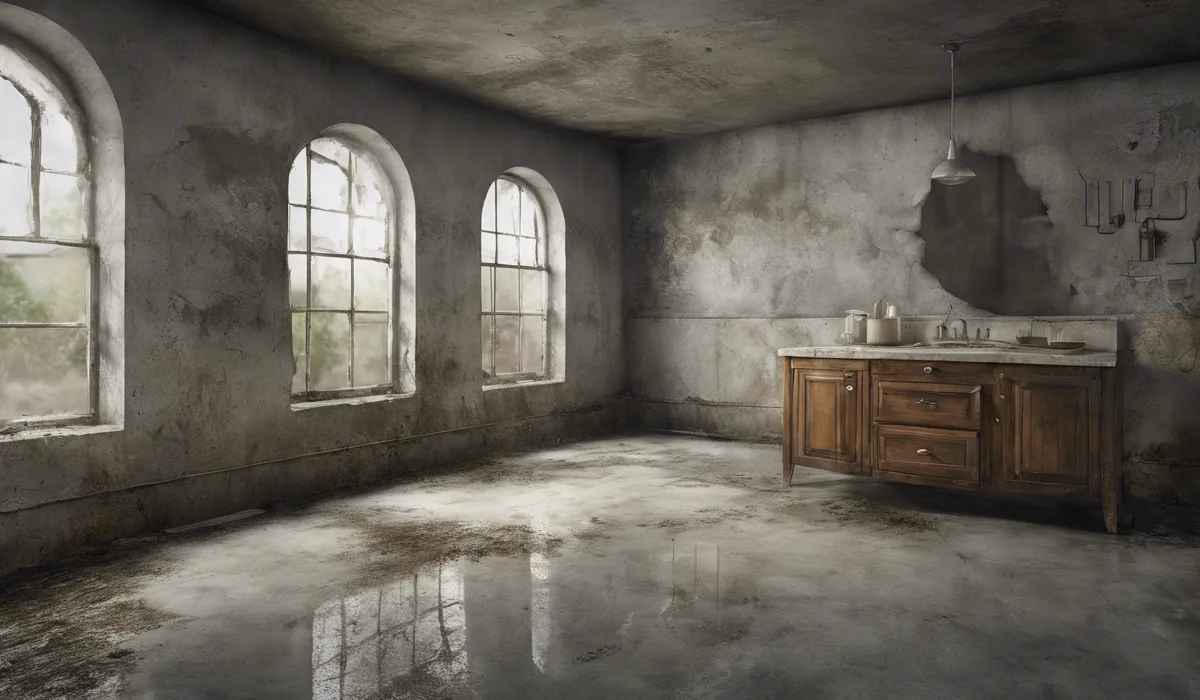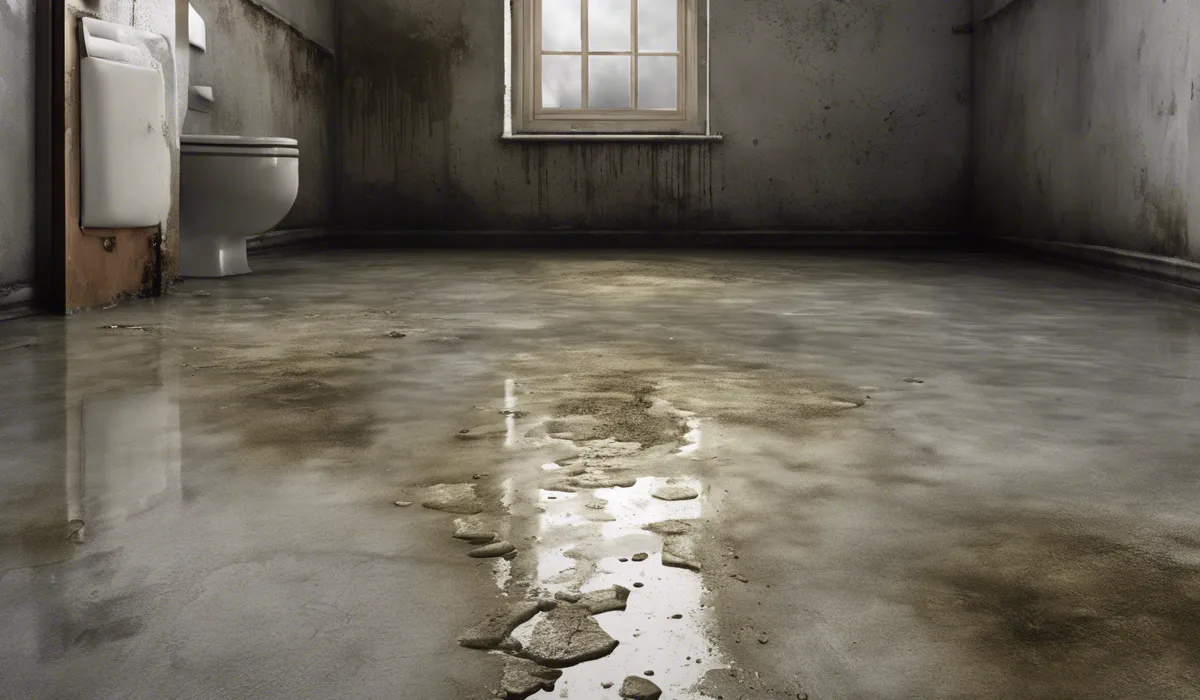Vinegar can kill surface mold on concrete. Its acidic nature breaks down mold structures. However, vinegar might not penetrate deeply enough for all cases. For stubborn mold, commercial cleaners or professional treatment may be needed.
Understanding Mold Growth on Concrete

Explanation of Mold and Its Characteristics
Mold is a type of fungus that can grow almost anywhere there is moisture and organic material.
It reproduces by releasing tiny spores into the air, which settle and grow on new surfaces.
Mold can appear fuzzy or slimy and comes in various colors like black, white, green, or orange. It thrives in damp, warm, and humid conditions and can start to grow within 24 to 48 hours under the right circumstances.
Mold is not only unsightly but can also cause a musty odor and contribute to health issues.
Conditions That Lead to Mold Growth on Concrete Surfaces
Concrete might seem impervious, but it is actually porous and can absorb moisture, which creates an ideal environment for mold.
When concrete stays wet for extended periods, especially in shaded areas where sunlight does not reach to dry it out, mold finds a perfect place to grow.
Poor ventilation and high humidity levels can also contribute to mold growth on concrete surfaces.
Health Risks and Structural Issues Associated with Mold
Mold on concrete can be more than just a cosmetic issue. It poses health risks, especially for individuals with allergies or respiratory problems.
Mold exposure can cause symptoms like sneezing, coughing, and eye irritation. In severe cases, it can lead to asthmatic episodes and other respiratory infections.
Additionally, while concrete itself does not decay from mold growth, the presence of mold can indicate moisture issues that may cause structural damage over time.
Common Areas Where Mold Tends to Grow on Concrete
Mold on concrete is commonly found in areas with poor drainage or where water can accumulate, like basements, garages, and outdoor walkways.
It can also grow under carpets or tiles laid on concrete if there is trapped moisture. Understanding where mold is likely to appear is the first step to preventing and treating it.
Vinegar as a Mold-Killing Solution

Properties of Vinegar That Make It Effective Against Mold
Vinegar is a mild acid that can kill many types of mold on contact. Its acidic properties disrupt the growth and survival of mold by breaking down the structures and proteins that make up the organism.
Vinegar is particularly effective against surface mold, making it a practical and natural alternative to harsh chemical cleaners.
Types of Vinegar and the Best Choice for Mold Removal
There are several types of vinegar, such as white vinegar, apple cider vinegar, and specialty vinegars.
For mold removal, white vinegar is typically the best choice because of its high acidity level and because it does not leave behind a strong color or odor. It is also cost-effective and widely available.
The Science Behind Vinegar’s Mold-Killing Ability
The acetic acid in vinegar is what gives it the power to kill mold. This acid can penetrate the cell membrane of the mold, causing it to die.
Vinegar is particularly effective against non-porous surfaces where mold is unable to deeply embed itself.
Comparison of Vinegar with Other Mold Removal Products
Vinegar stands out as a safe and non-toxic alternative to commercial mold removers that often contain harsh chemicals like bleach or ammonia.
While those products may be more potent and have a broader killing spectrum, vinegar is a more environmentally friendly option and is safe for use around children and pets. However, for deep-set mold in porous materials, stronger products or professional remediation may be necessary.
Application of Vinegar to Remove Mold on Concrete

Step-by-Step Guide on How to Use Vinegar to Kill Mold
To effectively use vinegar to kill mold on concrete, follow these steps:
1. Prepare the area by removing any loose mold with a stiff brush.
2. Clean the surface with soap and water to remove dirt and debris.
3. Apply undiluted white vinegar to the moldy concrete and let it sit for at least an hour.
4. Scrub the area with a brush to remove the mold.
5. Rinse the surface with water and let it dry completely.
Safety Precautions and Protective Gear
When dealing with mold, it is important to wear protective gear to avoid inhaling spores or getting mold on your skin.
Wear gloves, goggles, and a mask that covers your nose and mouth. Ensure the area is well-ventilated to disperse fumes and spores.
Tips for Preparing the Vinegar Solution
For most mold on concrete, undiluted white vinegar is effective. However, for light mold or for maintenance, you can dilute vinegar with water.
A good ratio is one part vinegar to one part water. Always use a spray bottle or a bucket to apply the vinegar solution to the concrete surface.
Techniques for Applying Vinegar to Affected Areas
Apply the vinegar solution using a spray bottle for even coverage or pour it directly onto heavily affected areas.
Use a stiff brush to work the vinegar into the concrete and reach into any crevices where mold may hide. Allow the vinegar to penetrate the surface and reach the mold’s roots.
Post-Application Care and Preventing Future Mold Growth on Concrete
After treating the concrete with vinegar, it’s important to dry the area thoroughly to prevent mold from returning.
Use fans or dehumidifiers to remove excess moisture from the air. To prevent future mold growth, address any moisture issues, improve ventilation, and consider using mold-resistant sealants on your concrete surfaces.
FAQs About Vinegar Killing Mold on Concrete
Can vinegar effectively kill mold on concrete surfaces?
Vinegar can kill surface mold on concrete due to its acidic nature, which breaks down mold structures.
Will vinegar remove mold from deep within concrete?
Vinegar might not penetrate deeply enough to kill mold within the pores of concrete in all cases.
Is vinegar always the best option for treating mold on concrete?
For stubborn mold, commercial cleaners or professional treatment may be more effective than vinegar.
How should vinegar be applied to concrete to treat mold?
Vinegar should be applied directly to the moldy area, left to sit for a while to break down the mold, and then scrubbed off.
Are there any risks to using vinegar for mold removal on concrete?
While vinegar is generally safe for concrete, it may not be suitable for all types of concrete finishes or if the concrete is sealed.
Final Thoughts
Vinegar can effectively kill surface mold on concrete due to its acidic properties that break down mold structures.
While it may not always penetrate deeply enough to remove all mold, it serves as a viable initial treatment. For more persistent mold issues, stronger commercial cleaners or professional services might be required to ensure complete eradication.
